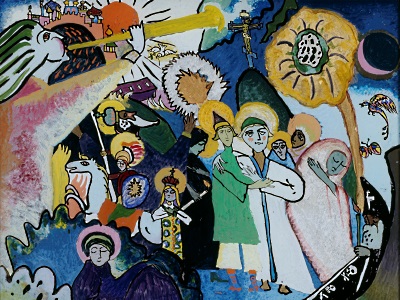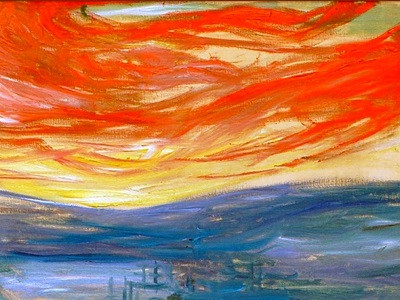From the very beginning, the human mind has associated that which is creative and life-bringing, good and noble, with warmth and light, radiance and brightness. Down through the ages, people have always been conscious that the warmth of light and love’s life and vitality belong together. Light and beauty are one. But light does not shine everywhere. The sun goes down. Night follows day. Throughout the ages we have always known that the radiant, blazing brightness of the good and powerful Spirit of light has an opposite – the evil, sinister spirit of cold and darkness. Everything that keeps back the awakening life of spring is death-like winter. Everything that opposes warmth is deadening cold. Everything that opposes unifying love causes disintegration and death. Death threatens life. Between light and darkness there is enmity and warfare to the end.
We are placed in a tremendous tension between life and death: we are called to burning, life-giving light, but can we overcome or conquer the freezing cold and deadly darkness? Will we survive in the struggle against this very dangerous power, which constantly besets us from within and without? The good Spirit of light was revealed from the very beginning as divine, as the leader and champion of life.
The evil spirit of darkness was from the very beginning the enemy, the sinister demon of night and death. Between the two stood the people God had created, struggling, as it were, between heaven and hell. This struggle filled their life. Full of alarm, they feared descending night as the cold threat of death and hell. Rejoicing, they greeted the dawn of shining day as the approach of glowing warmth, coming from the heavens and from life.
Light meant life and power. People saw the morning sun rise glorious to course triumphant across the heavens. In the sun, in light, and in fire, they saw nothing soft or insipid, nothing weak or servile. To them, the victorious power of light was armed with the radiant arrows of the sun and the flashing weapon of lightning. To them, the strong sun-hero of radiant morning and of bright springtime was welded to a fiery unity with the thunder-god of storms and threatening lightning. The light-god of the sun’s power was for them masculine and manly, like the thunder-god of storms and lightning. Spring, when the sun is ascending, was for them a youthful, courageous war-hero, who as a triumphant conqueror overcomes the aging giant of mighty winter and leads in a new time over the earth and all its inhabitants – the sunny time, the longed-for time, the expected time!
This time alone can awaken strong, prolific, and abiding life. For humankind, light was to triumph over darkness at the end of time. The day was to dawn when the last springtime of all worlds and ages would melt and abolish forever the whole present age of wintertime – this cold, dark, dead, and numbing ice age of the world of today. As the early Christian Hermas put it in his book The Shepherd, “The present world-age is wintertime. But the age to come is summertime.”
In the light of this summer to come – the light of the Spirit – everything destructive, everything belonging to humankind, is burned as dross. And everything that remains afterward – all that cannot withstand the refining flame of purity – is swept away.
Centuries ago, ancient Israel’s believers testified: “The Lord is my light” (Ps. 27:1). They called to him, “May your countenance shine upon us!” (Num. 6:24–26). They knew about living in the sight of God’s shining eyes. They let themselves be guided by his light and his truth. They came to the recognition: “In your light, we see light” (Ps. 36:9). Nevertheless their knowledge was incomplete when compared with that entrusted to Paul: for he saw the radiance that is alive in a true community or church: the radiance of glory to come, which in its inner aspect is in fact the light of “Christ within you” (e.g. Col. 1:27).
Jesus, the resplendent reflection of God’s radiant majesty, gives light for God’s kingdom. He is the true light, which enlightens everyone and shines into their darkness (John 1:9). He brings each one to the crucial decision whether he or she loves darkness more than light and wants to turn from darkness to light. When this happens, a sudden and wonderful change takes place in those about to be born anew. It shows the stark contrast: formerly, in and of themselves, they had been “darkness”; now, in Christ, they become “light” (Eph. 5:8).
They come to the Light of the world. They see the light. They are saved from the ruling powers of darkness so that from then on the fire of unity, as the light of peace, rules in them. Out of this rulership of inner light, a life of light takes shape that includes everything, transforming all previous confusion into clarity. It excludes the works of darkness. It leads to the works of burning light: self-consuming deeds of love that send out their rays far and wide.
This article is an excerpt from the book Inner Land: A Guide into the Heart of the Gospel, 5 vols. (Walden, NY: Plough, 2019–2021).
Article edited for length and clarity.

